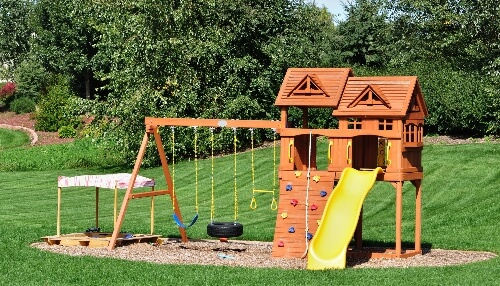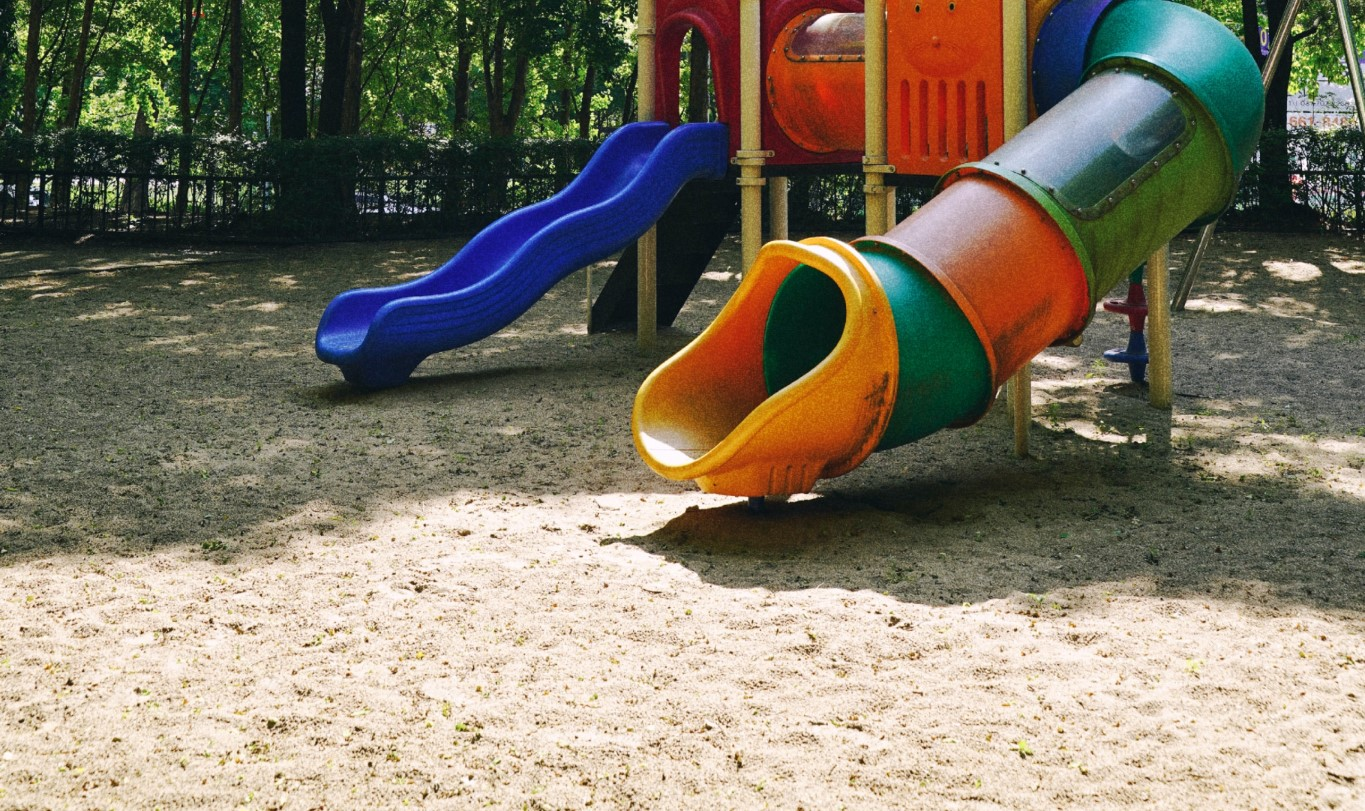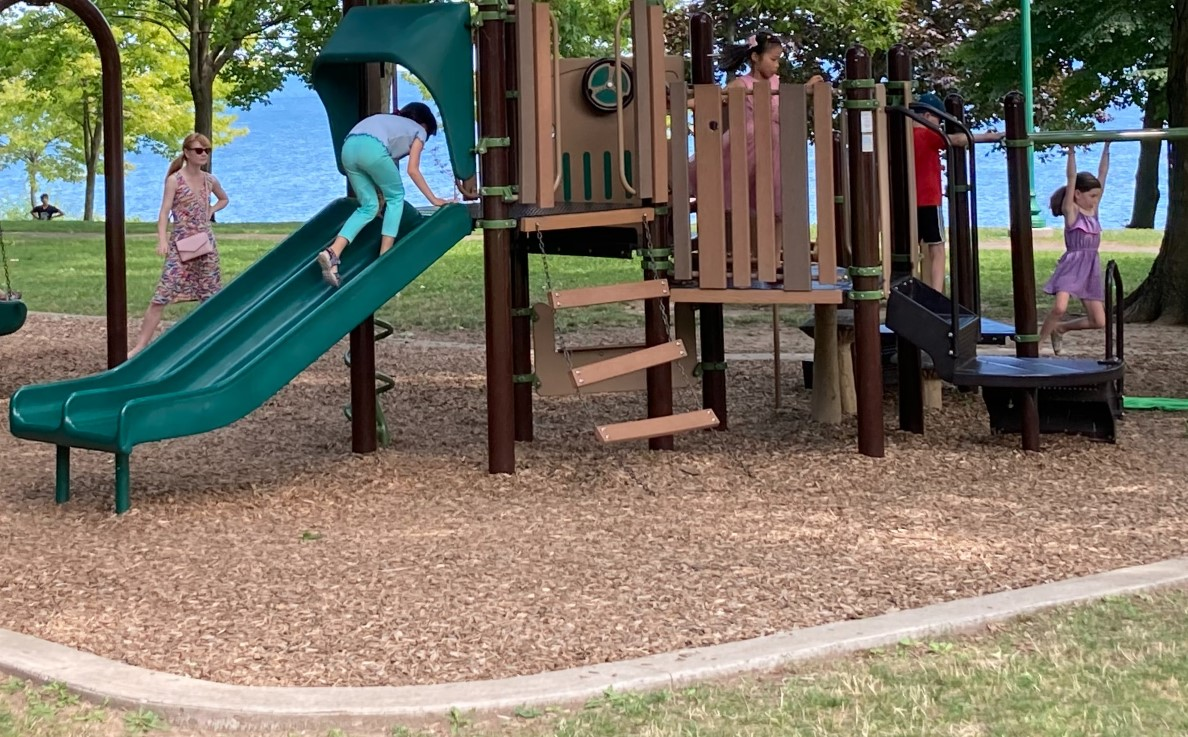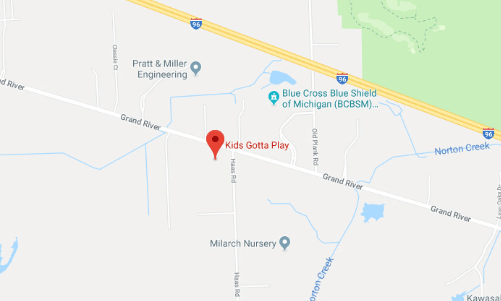Modified: February 24 2023

Playing outside is essential for children's physical and mental development, and having a play set in your backyard can be a great way to encourage outdoor activities. However, safety should always be a top priority when it comes to children's playgrounds.
One crucial aspect of playground safety is choosing the right material to put under the playset to absorb shock and prevent injuries. In this article, we'll explore the top materials you can use.
Top 5 Materials to Put Under an Outside Playset for Safety and Durability
When it comes to building a safe and enjoyable outdoor play area for your children, choosing the right material to put under a swing set or playset is crucial. Not only does it provide a safe surface for kids to play on, but it also helps to absorb shock in case of falls.
With so many materials available on the market, it can be challenging to decide which one is the best fit for your needs. In this article, we'll go over the top options for ground cover materials to put under a swing set or playset, their pros and cons, and what to consider when making your decision.
1. Rubber Mulch
Rubber mulch is an excellent choice for parents who prioritize safety and sustainability. Made from recycled tires, it's a durable and long-lasting option that provides excellent shock absorption in case of falls. Rubber mulch is also low maintenance and doesn't need frequent replacement. It's a bit pricier than other options, but it's an eco-friendly and safe choice for your children.
2. Engineered Wood Fiber
Engineered Wood Fiber, also known as EWF, is another popular option that's affordable and visually appealing. Made from shredded hardwood, it has a natural aesthetic that blends well with most landscapes. EWF provides decent shock absorption and can absorb falls up to 12 feet high. It's also easy to install and maintain. However, EWF requires regular maintenance to prevent compaction and loss of shock absorption.
3. Sand

Sand is a classic option for playground surfaces, and it's relatively inexpensive and easy to install. It provides good shock absorption and can be adjusted to different depths depending on your children's age. However, sand can be messy, require frequent maintenance, and may not be the best choice for areas with high rainfall or wind.
4. Pea Gravel
Pea gravel is another affordable option that provides excellent drainage and shock absorption. Made of small, smooth stones, it's an excellent choice for areas with high rainfall or water runoff. Pea gravel is also low maintenance and doesn't require frequent replacement. However, it can be uncomfortable to walk barefoot, and it may not be the best choice if you have younger children who are more prone to putting things in their mouths.
5. Wood Chips or Wood Mulch

Wood chips or wood mulch are natural options that provide good shock absorption and a natural appearance that blends well with most landscapes. They're also relatively inexpensive and easy to install. However, wood chips require frequent maintenance to prevent compaction and loss of shock absorption. They can also attract insects and pests, which can be a nuisance.
Other Options Including Artificial Grass
Artificial grass, loose fill materials, crushed stone, and even natural grass are other options that you can consider. However, each option has its pros and cons.
-
Artificial grass provides a low-maintenance option that's visually appealing, but it can be a bit slippery and not provide enough shock absorption.
-
Loose fill materials like wood chips, sand, and pea gravel can provide good shock absorption, but they require frequent maintenance to prevent compaction and loss of shock absorption.
-
Crushed stone provides good drainage but may not be the best option for younger children who are more prone to falls.
-
Natural grass can be visually appealing and provide good shock absorption, but it may not be the best choice for high-traffic areas.
Choosing the right material for your children's playground is crucial to ensure safety and adequate shock absorption. The Consumer Product Safety Commission recommends that you choose a material that provides at least nine inches of shock-absorbent material for play structures up to seven feet high.
The material you choose should also have good slip resistance and comply with ADA accessibility standards to ensure safety for all children. Consider the initial cost, maintenance costs, and natural appearance when selecting the best material for your playset. By doing so, you can create a safe and fun play area for your children to enjoy.
What to Put Under Playset FAQs
Here are some frequently asked questions (FAQs) about the best materials to put under an outside playset:


